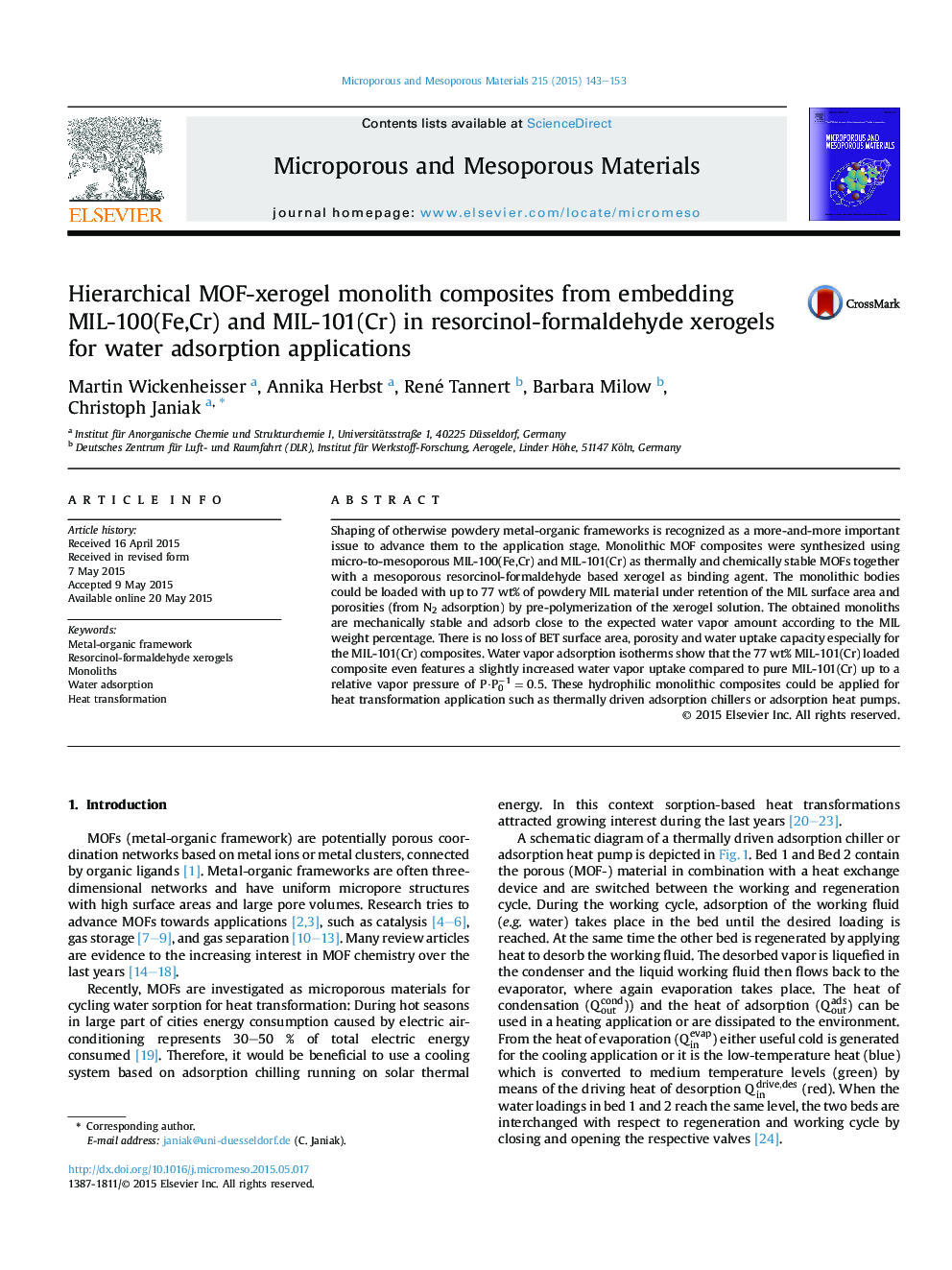| Article ID | Journal | Published Year | Pages | File Type |
|---|---|---|---|---|
| 72468 | Microporous and Mesoporous Materials | 2015 | 11 Pages |
•Pore blocking of MILs avoided by pre-polymerization of the pure xerogel solution.•Embedding of MILs into mesoporous resorcinol-formaldehyde (R,F-) xerogel.•Shaping of MOFs into R,F-xerogel monoliths with up to 77 wt% of MIL-101(Cr).•Monolithic composites for water vapor adsorption for heat transformation.•MIL-101(Cr) composites have higher water loading at P·P0−1=0.5 than bulk MIL-101.
Shaping of otherwise powdery metal-organic frameworks is recognized as a more-and-more important issue to advance them to the application stage. Monolithic MOF composites were synthesized using micro-to-mesoporous MIL-100(Fe,Cr) and MIL-101(Cr) as thermally and chemically stable MOFs together with a mesoporous resorcinol-formaldehyde based xerogel as binding agent. The monolithic bodies could be loaded with up to 77 wt% of powdery MIL material under retention of the MIL surface area and porosities (from N2 adsorption) by pre-polymerization of the xerogel solution. The obtained monoliths are mechanically stable and adsorb close to the expected water vapor amount according to the MIL weight percentage. There is no loss of BET surface area, porosity and water uptake capacity especially for the MIL-101(Cr) composites. Water vapor adsorption isotherms show that the 77 wt% MIL-101(Cr) loaded composite even features a slightly increased water vapor uptake compared to pure MIL-101(Cr) up to a relative vapor pressure of P·P0−1=0.5. These hydrophilic monolithic composites could be applied for heat transformation application such as thermally driven adsorption chillers or adsorption heat pumps.
Graphical abstractFigure optionsDownload full-size imageDownload as PowerPoint slide
